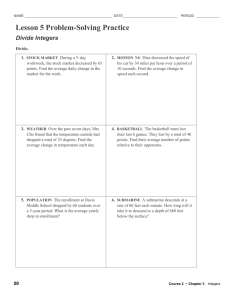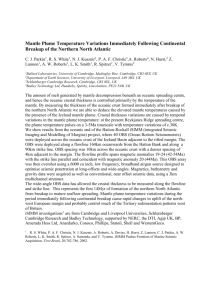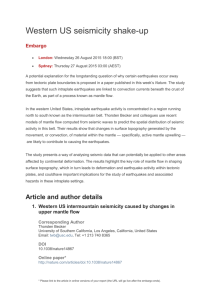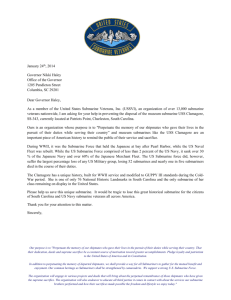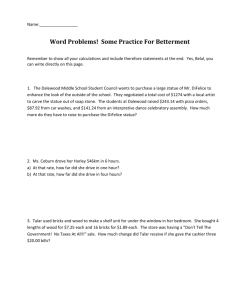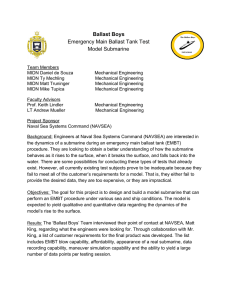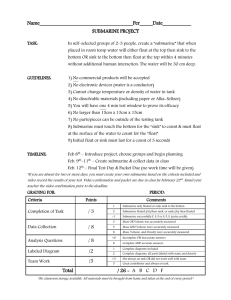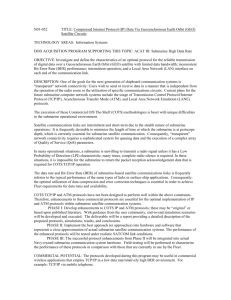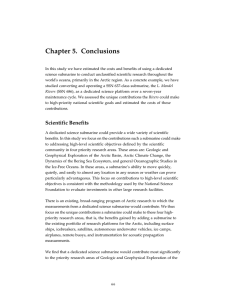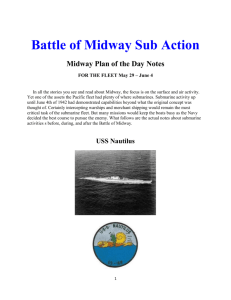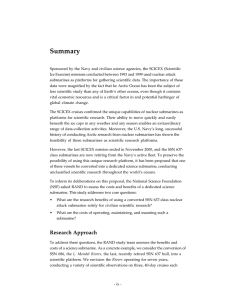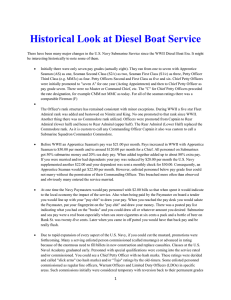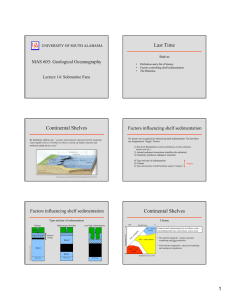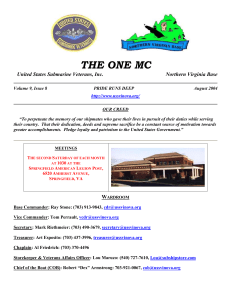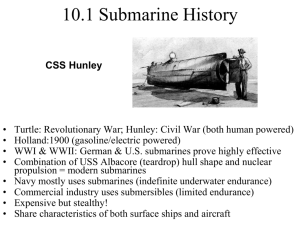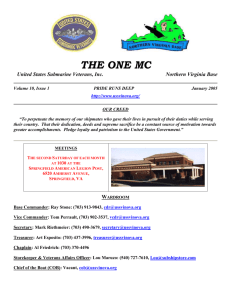GEOLOGY 1313 EARTHQUAKES AND VOLCANOES
advertisement
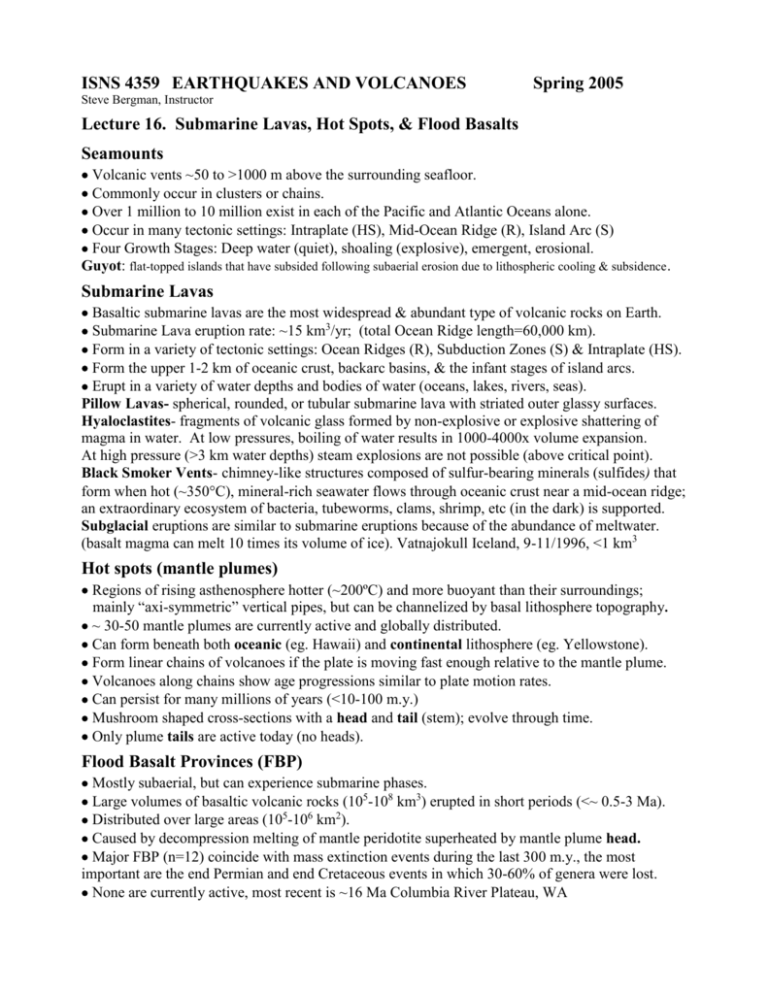
ISNS 4359 EARTHQUAKES AND VOLCANOES Spring 2005 Steve Bergman, Instructor Lecture 16. Submarine Lavas, Hot Spots, & Flood Basalts Seamounts Volcanic vents ~50 to >1000 m above the surrounding seafloor. Commonly occur in clusters or chains. Over 1 million to 10 million exist in each of the Pacific and Atlantic Oceans alone. Occur in many tectonic settings: Intraplate (HS), Mid-Ocean Ridge (R), Island Arc (S) Four Growth Stages: Deep water (quiet), shoaling (explosive), emergent, erosional. Guyot: flat-topped islands that have subsided following subaerial erosion due to lithospheric cooling & subsidence . Submarine Lavas Basaltic submarine lavas are the most widespread & abundant type of volcanic rocks on Earth. Submarine Lava eruption rate: ~15 km3/yr; (total Ocean Ridge length=60,000 km). Form in a variety of tectonic settings: Ocean Ridges (R), Subduction Zones (S) & Intraplate (HS). Form the upper 1-2 km of oceanic crust, backarc basins, & the infant stages of island arcs. Erupt in a variety of water depths and bodies of water (oceans, lakes, rivers, seas). Pillow Lavas- spherical, rounded, or tubular submarine lava with striated outer glassy surfaces. Hyaloclastites- fragments of volcanic glass formed by non-explosive or explosive shattering of magma in water. At low pressures, boiling of water results in 1000-4000x volume expansion. At high pressure (>3 km water depths) steam explosions are not possible (above critical point). Black Smoker Vents- chimney-like structures composed of sulfur-bearing minerals (sulfides) that form when hot (~350C), mineral-rich seawater flows through oceanic crust near a mid-ocean ridge; an extraordinary ecosystem of bacteria, tubeworms, clams, shrimp, etc (in the dark) is supported. Subglacial eruptions are similar to submarine eruptions because of the abundance of meltwater. (basalt magma can melt 10 times its volume of ice). Vatnajokull Iceland, 9-11/1996, <1 km3 Hot spots (mantle plumes) Regions of rising asthenosphere hotter (~200ºC) and more buoyant than their surroundings; mainly “axi-symmetric” vertical pipes, but can be channelized by basal lithosphere topography. ~ 30-50 mantle plumes are currently active and globally distributed. Can form beneath both oceanic (eg. Hawaii) and continental lithosphere (eg. Yellowstone). Form linear chains of volcanoes if the plate is moving fast enough relative to the mantle plume. Volcanoes along chains show age progressions similar to plate motion rates. Can persist for many millions of years (<10-100 m.y.) Mushroom shaped cross-sections with a head and tail (stem); evolve through time. Only plume tails are active today (no heads). Flood Basalt Provinces (FBP) Mostly subaerial, but can experience submarine phases. Large volumes of basaltic volcanic rocks (105-108 km3) erupted in short periods (<~ 0.5-3 Ma). Distributed over large areas (105-106 km2). Caused by decompression melting of mantle peridotite superheated by mantle plume head. Major FBP (n=12) coincide with mass extinction events during the last 300 m.y., the most important are the end Permian and end Cretaceous events in which 30-60% of genera were lost. None are currently active, most recent is ~16 Ma Columbia River Plateau, WA

